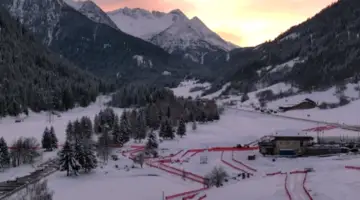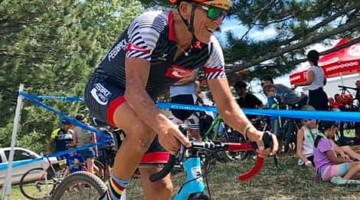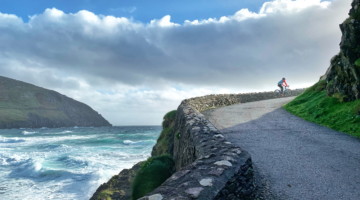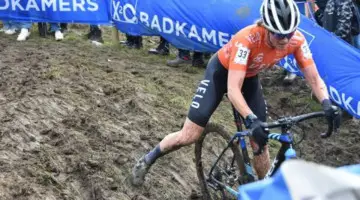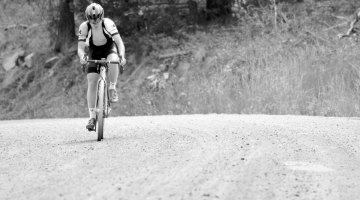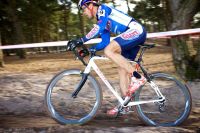 Cal Giant’s Henry Kramer gave Ned Overend a run for his money at the national championships in December Kansas City, and in January flew to Belgium for his annual battle against the world’s best. He wrote a pre-worlds report here, and sent in this post-race report recalling this year’s big race.
Cal Giant’s Henry Kramer gave Ned Overend a run for his money at the national championships in December Kansas City, and in January flew to Belgium for his annual battle against the world’s best. He wrote a pre-worlds report here, and sent in this post-race report recalling this year’s big race.
by Henry Kramer, photos by Joe Sales
2009 Masters Cyclocross World Championships, held in Silvermmer, outside of Mol, Belgium, at the same venue for 12 plus years, brought no great surprises. For the eight years that I have attended, the parcourse with its notoriously long sand section has challenged every international rider. There is a local advantage for sure, as they spend a good part of their September to February season racing in a mix of sand and mud. To be a world-class crosser, one must endure racing the fields and forests of the heartland of cross, Belgium. Every weekend, from September to February, there are as many as six races in the flat corn fields of West Flanders to the forests of the northeast. Mol offers a particular challenge with its huge sugar white sand beach that is sure to humbly bog even the strongest rider. Here in Belgium, it seems not speed, but power and fortitude carry the day.
This year’s race held no real surprises when American women scored three medals, with Kathy Sarvary’s second championship, and Lillian Pluke and Katrina Baumsteiger’s silver performances, while the American men battled hard for field results.
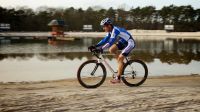 Starting in the middle of the day left little time to watch others, so my story tells only of my event. The biggest drama of each start is the call up, which is random, drawn from a hat or however the Belgium’s tea leaves read that day. I’m always outside the first two rows, and this year’s fourth row start meant looking for the opening and sprinting for them. It worked ok on entering the beach, as I changed my direction several times on the in run. The jam was normal in the sand, running the outside made sense to the first turn, when someone’s chainring tattooed my calf. I got off the beach and sprinted by a couple of riders into about 10th. Now at this point, there is a lot of windy single track and there are limited places to pass, but you have to stay after it, because there are always some really fast guys already clear and charging. This means you have to go harder than them just to catch up. There is the rub. Now the Belgium champ was called up first and last year’s world champ second, and they were already clear. I had raced the Belgium champ just last weekend at Kasterlee and he is strong. So I had to give everything. And that seems that’s what it took to get up to a chasing group of four. Attacking on the start finish stretch, put me on the front, but De Scheemaeker caught me off guard (he was the champ when I finished 2nd in’07). He ran the sand and pinched me while I rode to the corner. This forced me off the bike. Willems flew up the side, attacking the waterfront (Willems won in ’06, when I was of the front with him and my wheel got taken out on the beach in a break). Guinle, the Frenchman who won last year, stayed close to the departing Belgians. With my momentum slowed, there was no response. The others reacted, and separated from me. I tried hard to chase on the last lap, but encountering lapped riders slowed my progress in many of the difficult sections.
Starting in the middle of the day left little time to watch others, so my story tells only of my event. The biggest drama of each start is the call up, which is random, drawn from a hat or however the Belgium’s tea leaves read that day. I’m always outside the first two rows, and this year’s fourth row start meant looking for the opening and sprinting for them. It worked ok on entering the beach, as I changed my direction several times on the in run. The jam was normal in the sand, running the outside made sense to the first turn, when someone’s chainring tattooed my calf. I got off the beach and sprinted by a couple of riders into about 10th. Now at this point, there is a lot of windy single track and there are limited places to pass, but you have to stay after it, because there are always some really fast guys already clear and charging. This means you have to go harder than them just to catch up. There is the rub. Now the Belgium champ was called up first and last year’s world champ second, and they were already clear. I had raced the Belgium champ just last weekend at Kasterlee and he is strong. So I had to give everything. And that seems that’s what it took to get up to a chasing group of four. Attacking on the start finish stretch, put me on the front, but De Scheemaeker caught me off guard (he was the champ when I finished 2nd in’07). He ran the sand and pinched me while I rode to the corner. This forced me off the bike. Willems flew up the side, attacking the waterfront (Willems won in ’06, when I was of the front with him and my wheel got taken out on the beach in a break). Guinle, the Frenchman who won last year, stayed close to the departing Belgians. With my momentum slowed, there was no response. The others reacted, and separated from me. I tried hard to chase on the last lap, but encountering lapped riders slowed my progress in many of the difficult sections.
The raced is scheduled for only 30 minutes, very short, about four laps. Fast laps are between 6 and 6.5 minutes. We ended racing 6 laps, 2 more than you might figure. The winning time was just around 37 minutes. These guys are old, but they are not slow. My seventh place kept my top ten consistency alive. Though it’s disappointing, it’s an eight-year alive. My only trepidation is the unrecognized call up process. That has kept podium finishers from returning to race.
Just remember what Jacob said, “If you don’t start, you can’t win”. Maybe one day…























